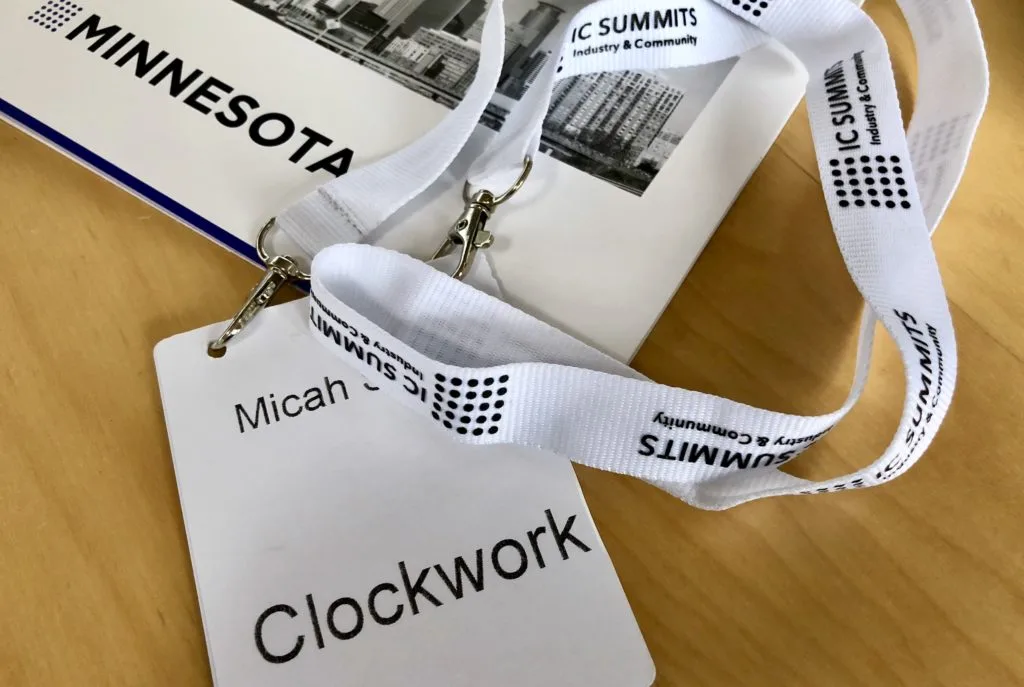The Minnesota Marketing Summit is a day long, panel-focused event that happened last week in downtown Minneapolis. It was a great opportunity to meet other marketing professionals, both from the client and brand side, as well as local agencies and vendors. It was a day full of great discussions about the marketing industry, with participants sharing stories about how they’re adapting to a changing landscape. Here are the three things I took away from the day:
Agile thinking is helping marketing teams double down on what’s working, and ditch what’s not
Agile marketing was a consistent thread in most of the discussions throughout the day. Most participants described, at one point or another, how they’re using agile ways of thinking to launch marketing experiments. This allows them to test ideas in the wild with real customers, before deciding to double down on big campaign spends. Real feedback, received quickly,helped them make better business decisions.
For Kate Vann, Director of Digital Marketing & Ecommerce at Lifetouch, the agile approach keeps her and her team focused. Agile thinking and data providers her with the information she needs to say no when things aren’t working. This keeps her from “boiling the ocean” with too many marketing initiatives. (Lifetouch is a client, and you can read the case study about how we helped them rebuild their new drag-and-drop yearbook building web app.)
Julie Scheife, the Digital Marketing Director at Land O’ Lakes, shared how digital and agile thinking are helping to grow their brand past their core audience —, the Baby Boomer generation. By working on smaller, iterative approaches, they are “learning into” emerging customer segments where they can’t rely as much on intuition or past experience. In a nutshell, her approach is, “Let’s try that, and quickly measure, pivot and move forward.”
Why agile?
There are many ways to “do digital.” Each has their pros and cons. Agile is a nimble, iterative way of working that speeds up delivery — and results. Founded in the software and technology space decades ago, the approach breaks up big tasks (like, a seasonal, cross-channel digital marketing campaign) into smaller iterations that are frequently reassessed (like a 5-day, single-channel A/B campaign).
Learning what works and what doesn’t is built into the approach, which is what makes it so valuable for business: As business moves faster and faster, an agile approach keeps up.
We’ve found it helps both clients and internal teams work faster, better, and smarter. As the panelists above learned, staying focused and growing into new audiences can happen more easily if you’re constantly validating what you’re doing. It’s no surprise that the synergy between agile thinking and digital culture is so strong. Digital culture ushered in the ability to test and learn via data, and has increasingly influenced how businesses understand and validate ideas and products.
New tools are unlocking potential with marketing automation and data and analytics
Another prevalent theme throughout the day was how data is transforming marketing. Many panelists described how they used data to make decisions or better understand their customers. They also talked about new capabilities within marketing automation and predictive analytics that are creating fresh approaches to engaging with their audiences.
Audra Carson, Head of Content Marketing & Media Platforms at General Mills, told us how she uses data and automation to personalize their communications and get the most out of their marketing spend. It helps her assess and adjust how frequently they reach out to their audience: “The more you engage, the more we send to you.” They focus their outreach efforts on customers who engage the most with their campaigns. The automation allows them to identify and reward loyal fans and brand enthusiasts, and for General Mills to get the most value from their most valuable customers.
For Mike Grahl, Chief Marketing Officer for the Minnesota Timberwolves and Lynx, marketing automation is a cornerstone of their marketing strategy. Rather than using it to validate, they use this new technology to define the business rules that he and his team use to outline content needs. What are customers doing and what will they need throughout that journey to support, explain, and reward their behavior? Thinking “automation first” is clearly a winning strategy for them.
Why is Marketing Automation and Predictive Analytics helping?
To really take advantage of the capabilities that these automation platforms bring, you have to take a user-centered approach. In fact, marketing automation can be a great way to translate a customer or buyers’ journey into strategic action. If you know the “happy path” for your ideal customer, you can create an automated workflow to ensure they get the right message at the right time.
You can learn a lot from the data you collect about the people using your product (or almost using). When it comes to predictive analytics, this data can be mined to uncover marketing opportunities that otherwise may have gone unnoticed.
Outside and agency partnerships are critical for bringing best-of-class thinking and experience to internal teams, and fast
Early on in the event, Julie Scheife from Land O’Lakes said, “You need an outside perspective for fresh ideas and people inside who are willing to listen.” This sentiment was echoed in most of the panels throughout the day. And we heard it from both sides of the “aisle”: in-house teams like Land O’Lakes and, vendors like Sitecore, as well as agencies like Clockwork and Mirum.
One area that got a lot of attention was the need for successful collaboration between agencies and brands. Jenny Holman, VP of Client Development here at Clockwork, talked about the importance of forming a partnership, not just a “vendor relationship.” It’s a continuation of our “people first” business strategy, and something we take seriously internally with our staff and externally with our clients. She described it as “Becoming confidants, checking up on the work we’ve delivered by getting involved in the metrics and reporting. It’s also following up and asking questions, so that we can understand the results of the work that we’re doing.”
All successful partnerships are two-way. Agencies have to care enough to ask questions and connect with the people inside companies, not just the problems they’re trying to solve. And brand/companies/in-house teams, have to be strong enough to hear new ideas.
Having the “right people in the room” is something that Ryan Peña, a Social Media Strategist at Be The Match – NMDP, described as an important part of forming a strong relationship with agencies. The work that agency partners are doing likely touches many different areas of the business, and he underscored the importance for cross-team communication. This is something we continually explore in our own partnerships at Clockwork, and again requires both partners asking “who is this going to be impacted and how can we make it as frictionless as possible?” That’s a very different question than, “Who is the decision maker?”
Brant Haenel, Chief Strategy Officer at Modern Climate, added a slightly different angle, saying “right people means right interest, not right job title.” It’s a creative way to get diverse perspectives in the room when working with an agency — think “who is the most interested in sales?” instead of defaulting to the “Head of Sales” job title. He went on to recommend that clients “speak up if you’re not getting what you need.” This asking for what you need, asking for information or clarification, and being transparent is something we couldn’t underscore more.
That’s a wrap!
Overall, you could tell that change was in the air (and I don’t think it was just the changing of seasons). As the nature of marketing shifts, new challenges and opportunities are emerging, and teams are needing to develop new skills and capabilities in order to remain strategic. It was great to hear how Minnesota marketing teams are leaning in to this transformation by adopting agile thinking, exploring how to use data and new tools, and relying on partners and agencies to bring creativity and expertise to their jobs.




